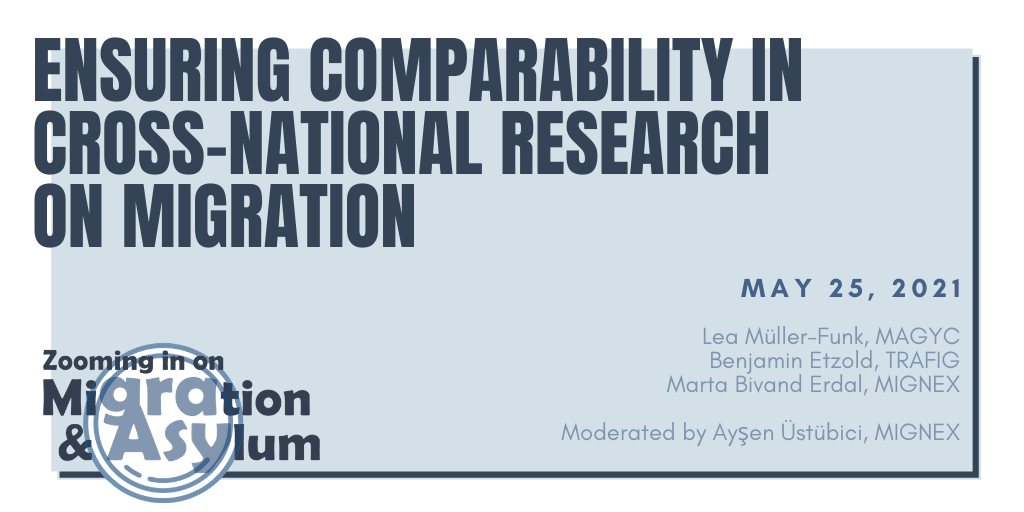#9: Ensuring comparability in cross-national research on migration
25 May 2021, 13:00 – 14:30 CET

Migration research benefits from comparative analyses across countries, communities or groups. But comparability can be a vexing issue, in both methodological and conceptual terms.
At the level of research design, what are feasible and meaningful units of comparison? One obvious pitfall is methodological nationalism – the uncritical use of nation-states as analytical units. Another is the reification of dynamic and heterogeneous migrant populations.
In the context of data collection, how can the desire for comparability best be balanced with data collection that is attuned to local contexts? Are the challenges (and solutions) different for qualitative and quantitative methodologies? And what are the implications for international collaboration between teams and individuals with different types of ties to the groups or locations that are studied?
In this webinar we draw upon the challenges encountered and lessons learned in cross-national research projects. The event organised by:
- MIGNEX, which carries out mixed-methods data collection in 25 local areas across 10 countries in Africa, the Middle East, and Asia.
- TRAFIG, which investigate long-lasting displacement situations at multiple sites in Asia, Africa and Europe and analyse options to improve displaced people’s lives.
- MAGYC, which is conducting comparative, multi-level analysis of the dynamics of South-South migration flows in key sending regions of migration to the EU.
Moderation:
- Dr Ayşen Üstübici, Assistant Professor in the Department of International Relations and Department of Sociology at Koç University and researcher on the MIGNEX project.
Panel
- Dr Lea Müller-Funk, Research Fellow at GIGA German Institute of Global and Area Studies and researcher on the MAGYC project.
- Dr Benjamin Etzold, Senior Researcher at the peace and conflict studies center BICC and Scientific Coordinator of the TRAFIG project
- Dr Marta Bivand Erdal, Research Professor in Migration Studies at the Peace Research Institute Oslo and lead for Work Package 4: Perspectives for the MIGNEX project.
Registration
You can register for the webinar series here. You will receive a confirmation email upon registration.
Recording
All webinars will be livestreamed via YouTube. Follow the TRAFIG YouTube channel for all past recordings and upcoming livestreams of Zooming in on Migration and Asylum.